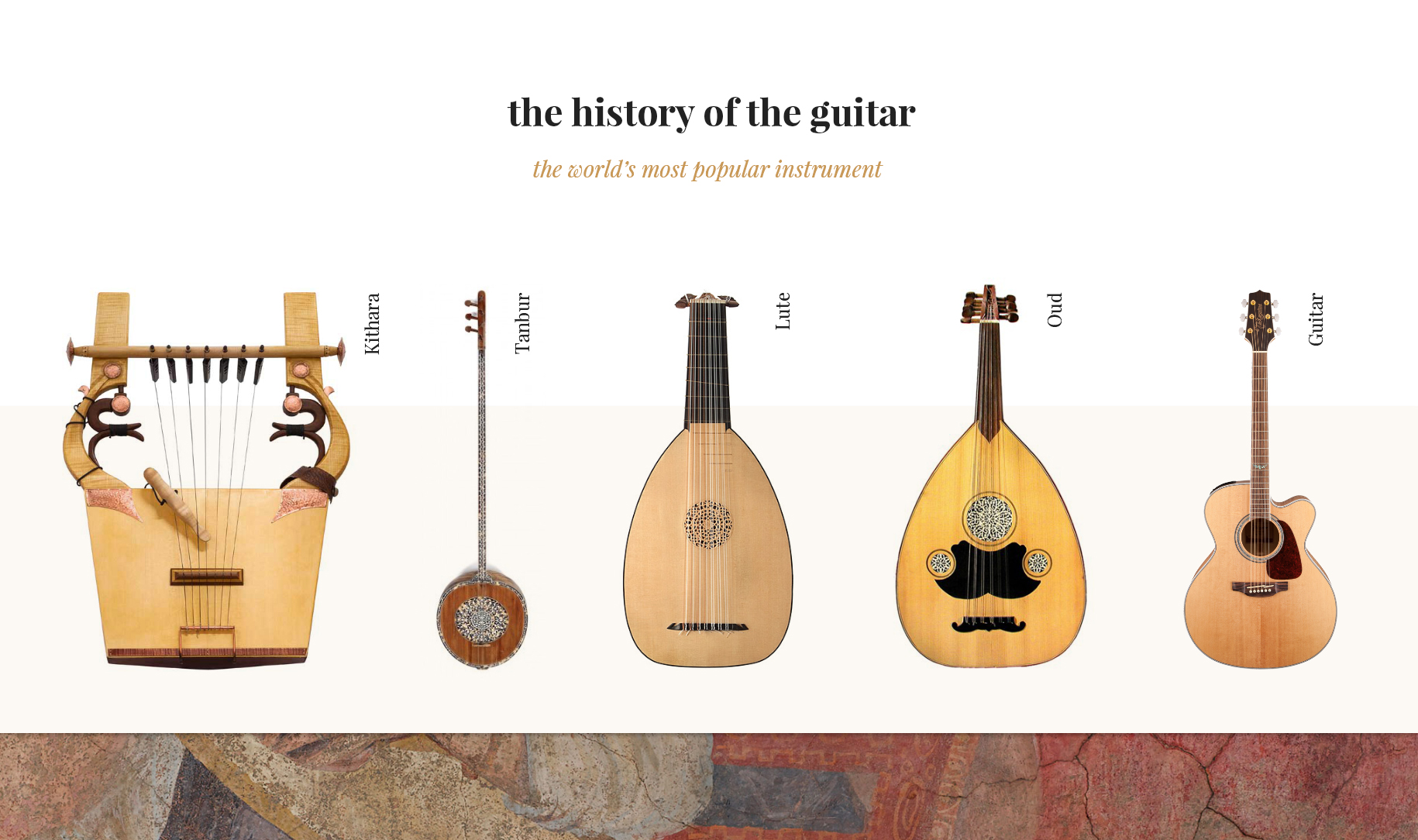
The music industry is constantly evolving and revolutionizing. Changes in the audience’s taste and musicians’ desires to experiment
have forced the musical world to modernize and create new instruments to meet demands, from the theremin in the 1920s to the latest apps found on the laptops of electronic musicians. But one thing has remained constant this entire time: the centrality of the guitar, the most popular instrument in the world. Guitars are the nucleus of the music industry and it’s impossible to dispute the pride of place it has in many musical genres, from folk to heavy metal. Despite all the new instruments crowding the market, the guitar is still the most played instrument in the world and continues to be a favorite for youngsters who want to start playing.
Ever wonder when, why, and how this important instrument was invented? Read on and find out.
History of the Guitar: Origins
The history of the guitar, with some variations, traces back more than 4000 years. There are many theories about its origins: many believe that it’s an enhanced model of an ancient instrument called the “lute,” which was used to play folk and traditional songs, while others see it as a relative of the Greek “kithara.” While compelling, prestigious music historians such as Dr. Michael Kasha, have proved these accounts to be unreliable.
Things start getting much clearer, however, once archeologists discovered the guitar’s oldest ancestor: a string instrument named the “tanbur.” The tanbur has, with some differences, the shape of the guitar. These instruments eventually evolved into the Oud, which spread into the Arabic islands. Later, Europeans adopted the instrument and added some frets to enhance its look. They christened it the lute, paying tribute to its Arabic name, Al-Oud (meaning “perfumed wood”).
The Lute
The lute’s popularity eventually gave way to the guitar; named after the Sanskrit word for “string.” The instrument became very popular in many European countries during the 16th and 17th centuries. While most people are roughly familiar with acoustic and electric guitars; the instrument continues to boast a wide range of variations. From Contrabass to treble! ( Famous in Europe and Latin America). The twelve-string guitar has six double courses placed in standard tuning. The Hawaii Guitar or steel guitar is laid across the knees of the player instead of propped upright. And, of course, there is the famous electric guitar; played mostly in rock music but not unheard of in jazz and other genres. It’s a solid, non-vibrating body guitar made of steel.
We hope you enjoyed this article and learned a thing or two while reading it. If you want to know more about the world’s most popular instrument, signup to our newsletter at the bottom of this page!

